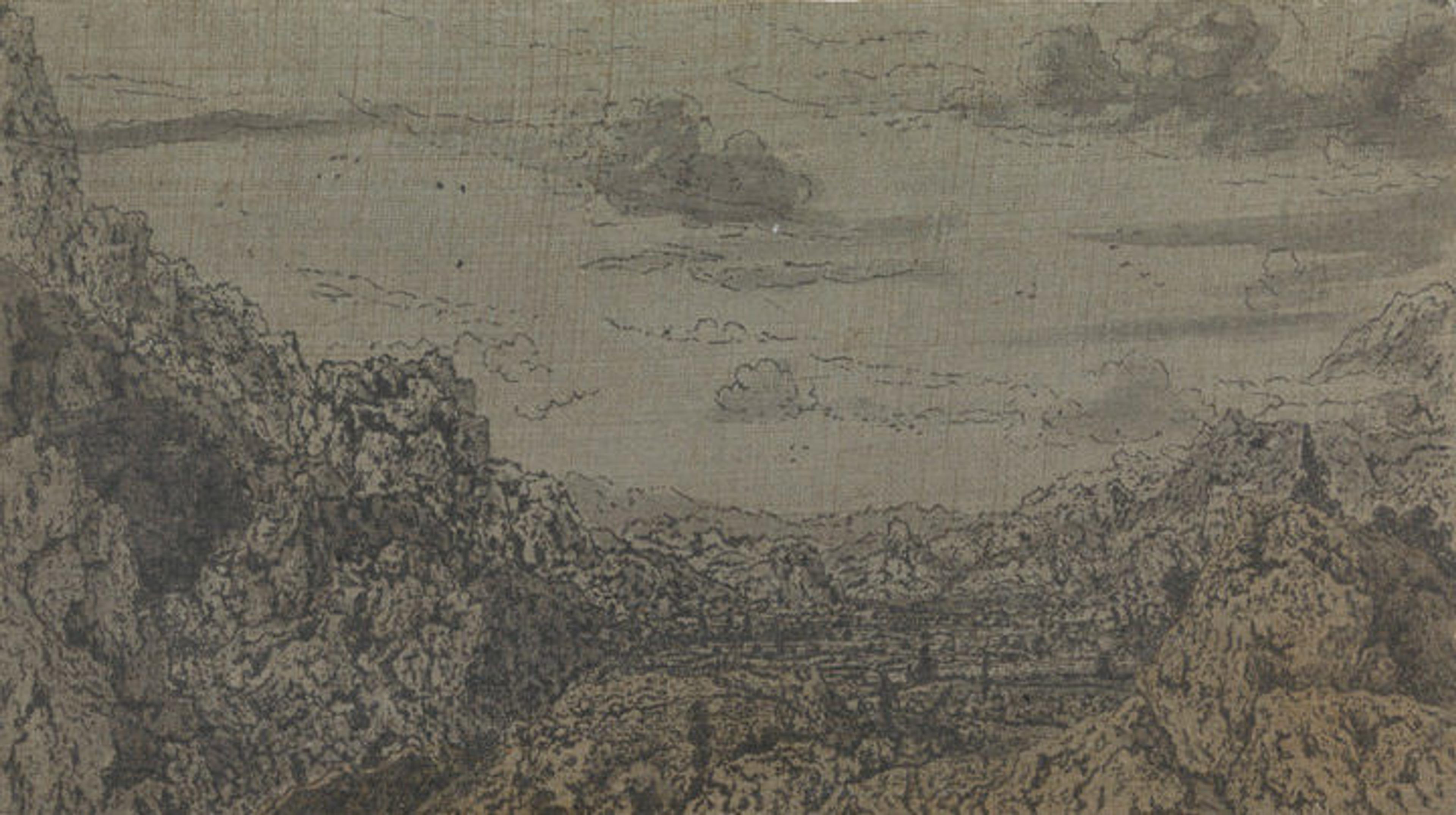
Hercules Segers (Dutch, ca. 1590–ca. 1638). The Enclosed Valley, ca. 1625–30. Line etching printed on linen with a gray ground, colored with brush; first state of four, Sheet: 4 1/4 x 7 5/8 in. (10.8 x 19.3 cm). Rijksmuseum, Amsterdam; Mr and Mrs De Bruijn-van der Leeuw Bequest, Muri, Switzerland, 1961 (inv. no. RP-P-1961-869)
«Hercules Segers was more experimental in using color in his prints than any artist of his time. During the Dutch Golden Age, prints were mostly created with black ink on white paper, and all impressions of a print were meant to look the same. If a collector was interested in adding color to their prints, they would pay to have the work painted by a professional colorist. Segers, however, discovered ways of taking a single printing plate and producing many variations with different colored printing inks, colored papers, fabrics, and paint so that each impression would appear unique—an approach that resulted in what a contemporary author called printed paintings.»
The color variations that Segers applied to The Enclosed Valley seem to evoke different times of day and seasons. Twenty-two impressions of this etching have been preserved, 10 of which were printed on cloth. (Seven of these are currently on view in The Mysterious Landscapes of Hercules Segers.) The one shown above, which was printed in black ink on a segment of cloth that was first painted gray, evokes an overcast day. After printing, Segers colored it with light brown paint on the rocks in the foreground, a more opaque dark gray on the rocks at left and right, and a light gray in the mountains in the background and on the clouds.
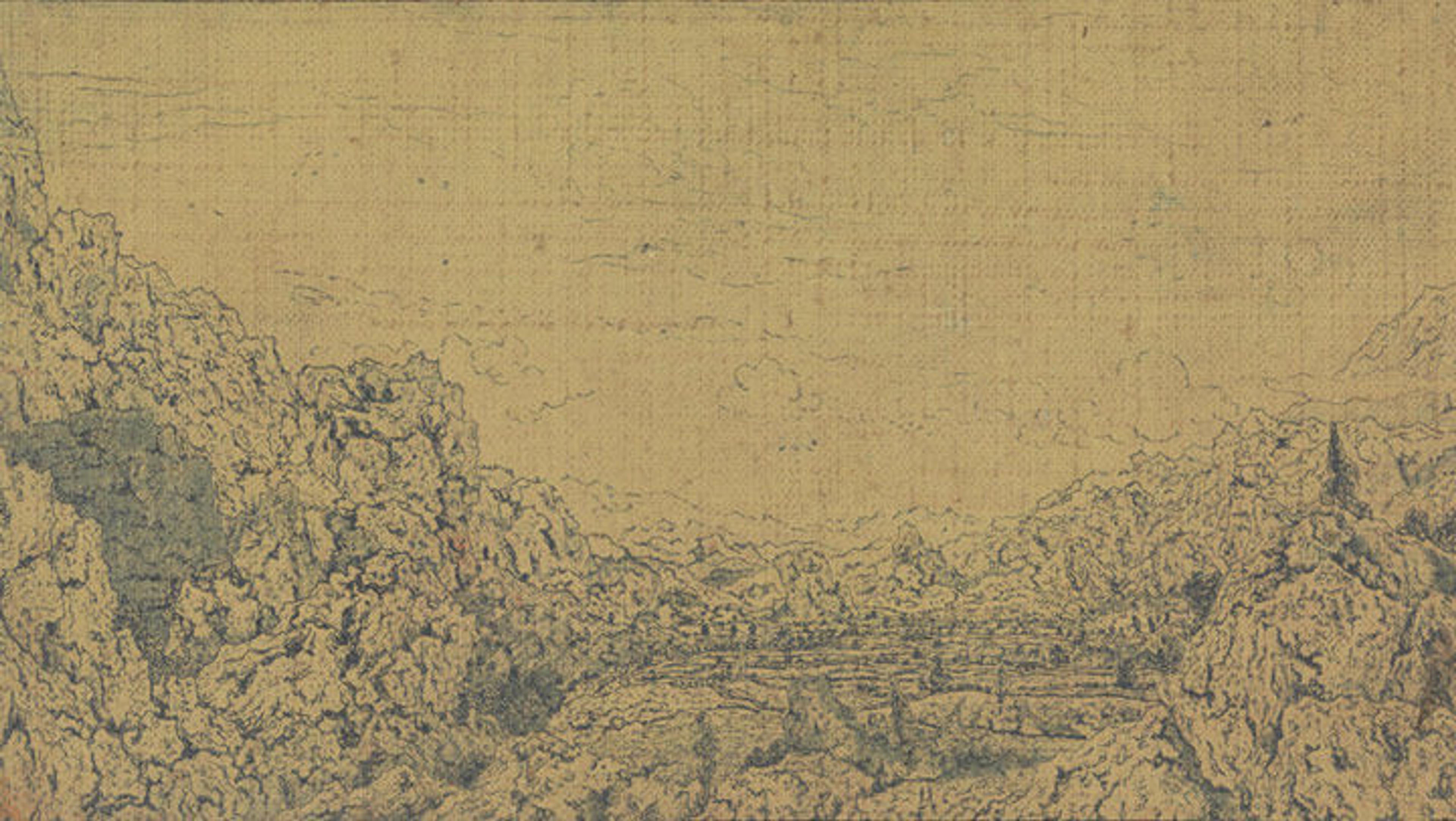
Hercules Segers (Dutch, ca. 1590–ca. 1638). The Enclosed Valley, ca. 1625–30. Line etching and drypoint printed in blue on linen with a yellow ground; second state of four, Sheet: 4 1/8 x 7 1/4 in. (10.4 x 18.4 cm). Rijksmuseum, Amsterdam; on loan from the City of Amsterdam (inv. no. RP-P-H-OB-812)
Segers printed this impression in blue ink on linen that had been painted yellow. Rather than calling to mind a cloudy day, the feeling here is of a hot summer day. There was no additional paint applied to this version; instead, Segers added to the printing plate some fine parallel diagonal drypoint lines that appear slightly fuzzy when printed. Such changes to a printing plate are referred to as state changes. The lines are visible in particular as the large dark patch in the rocks on the left. It is interesting to note that Segers painted that exact same spot in the earlier state (shown at the top of this page). It was clearly an area that he wanted darker and he took care of it in the second state by adding lines to the plate.

Hercules Segers (Dutch, ca. 1590–ca. 1638). The Enclosed Valley, ca. 1625–30. Line etching and drypoint printed in blue on a cream-tinted ground, colored with brush; second state of four, Sheet: 4 5/16 x 7 5/16 in. (11 x 18.5 cm). Rijksmuseum, Amsterdam, purchased 1874 (inv. no. RP-P-OB-814)
To evoke a hazy morning, Segers added painted color to this impression to heighten the three-dimensionality of the rocks and bring out the features in the foreground.

Hercules Segers (Dutch, ca. 1590–ca. 1638). The Enclosed Valley, ca. 1625–30. Line etching and drypoint printed in dark green on green paint; second state of four, Sheet: 4 1/8 x 7 1/2 in. (10.4 x 19 cm). British Museum, London (inv. no. S. 5523)
Perhaps the most startlingly different impression is this one, which was printed in dark green on paper that had been painted green. This somber image, in which the details of the landscape are difficult to decipher, suggests a nocturnal scene. Segers brought out the three-dimentionality of the landscape in the previous impression by painting it, and here he flattened it out with dark coloring.
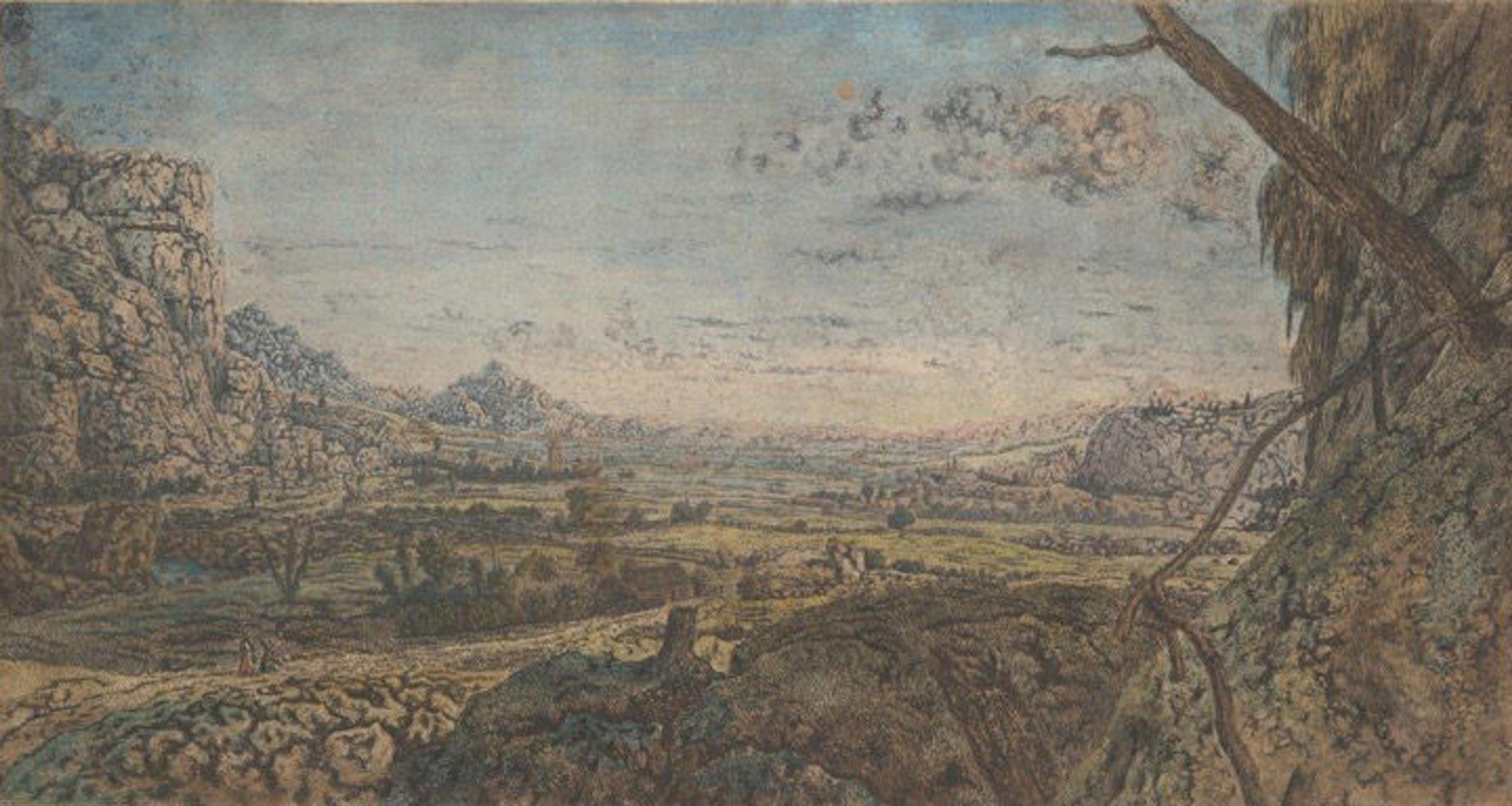
Hercules Segers (Dutch, ca. 1590–ca. 1638). Mountain Valley with Fenced Fields, ca. 1625–30. Line etching, colored with brush; first state of two, Sheet: 10 7/8 x 20 1/4 in. (27.7 x 51.5 cm). Kupferstich-Kabinett Staatliche Kunstsammlungen Dresden (inv. no. A 49388)
In the impressions of Mountain Valley with Fenced Fields, Segers also suggested different times of day: early morning, dusk, and night. The specific application of paint to the bright morning scene draws attention to small details that might easily be overlooked: the many little houses with their red roofs, the body of water painted bright blue, and the two tiny figures on the left wearing red and white.
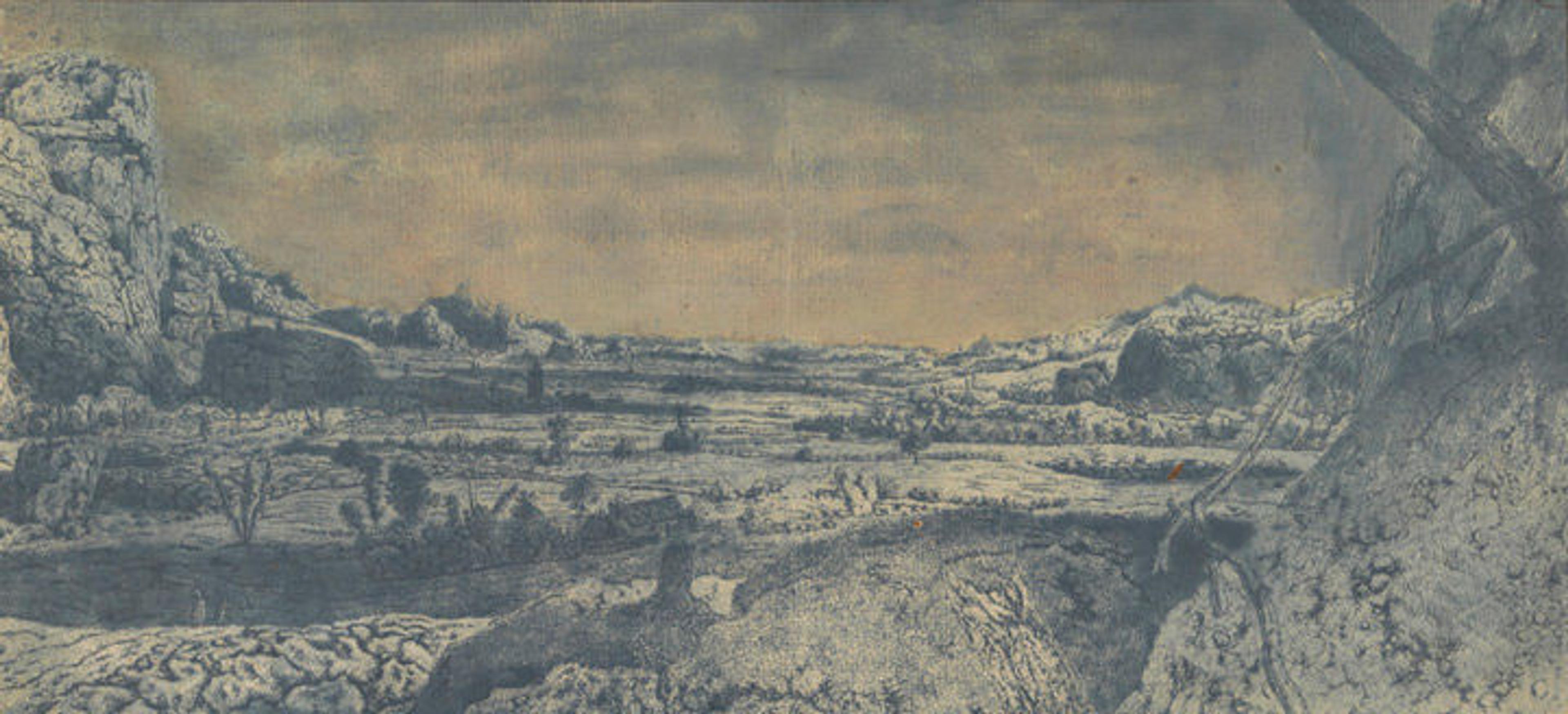
Hercules Segers (Dutch, ca. 1590–ca. 1638). Mountain Valley with Fenced Fields, ca. 1625–30. Line etching and drypoint printed in blue, with plate tone, colored with brush; second state of two, Sheet: 8 7/8 x 19 1/4 in. (22.5 x 48.9 cm). Rijksmuseum, Amsterdam; transferred from the Koninklijke Bibliotheek, collection Pieter Cornelis Baron van Leyden (1717–1788), 1816 (inv. no. RP-P-OB-840)
This impression depicting dusk was printed in blue ink on thick paper before pink and blue paint was added to the sky.
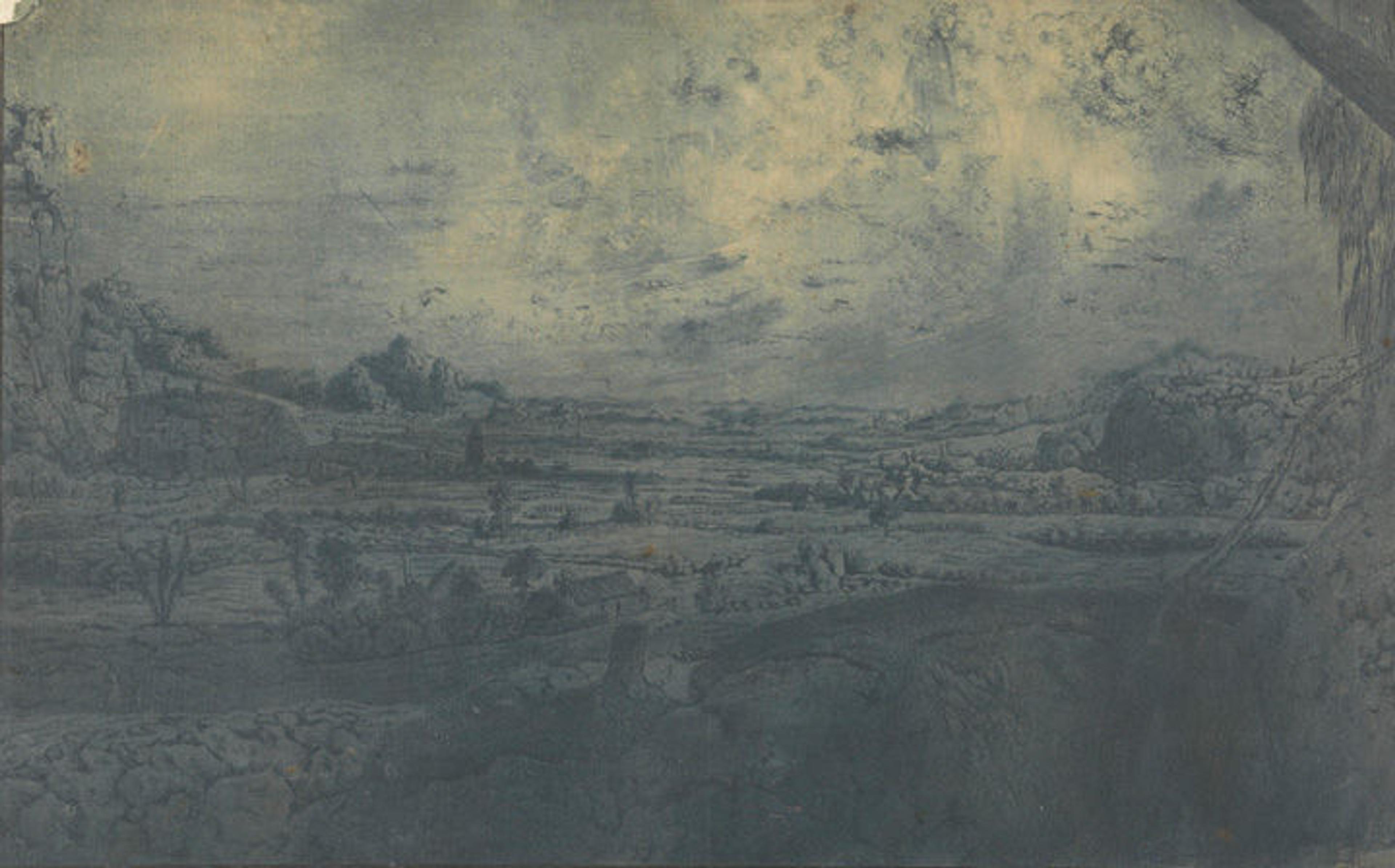
Hercules Segers (Dutch, ca. 1590–ca. 1638). Mountain Valley with Fenced Fields, ca. 1625–30. Line etching and drypoint printed in blue, with plate tone, colored with brush; second state of two, Sheet: 9 13/16 x 15 13/16 in. (25 x 40.1 cm). Rijksmuseum, Amsterdam; transferred from the Koninklijke Bibliotheek, collection Pieter Cornelis Baron van Leyden (1717–1788), 1816 (inv. no. RP-P-OB-841)
Segers printed this deep blue night scene with generous amounts of plate tone, but he did not wipe all of the ink from the etching plate before he printed it. He then overpainted the impression with blue watercolor. The valley is thus bathed in the light of an invisible moon.
Related Links
The Mysterious Landscapes of Hercules Segers, on view at The Met Fifth Avenue through May 21, 2017
Now at The Met: View all blog articles related to this exhibition.
Compare different impressions of Hercules Segers's work in an interactive web feature, Infinite Variations: A Closer Look at Segers's Prints, composed by Robert G. Erdmann, senior scientist at the Rijksmuseum, Amsterdam.